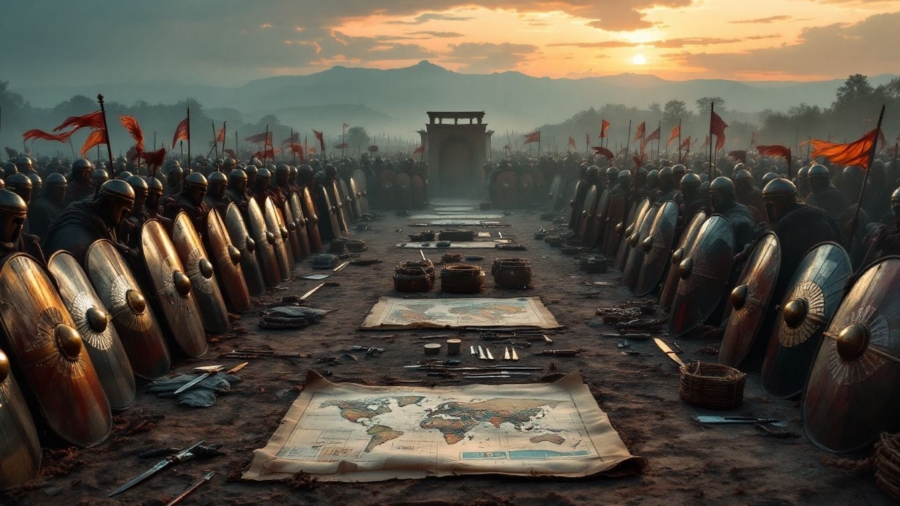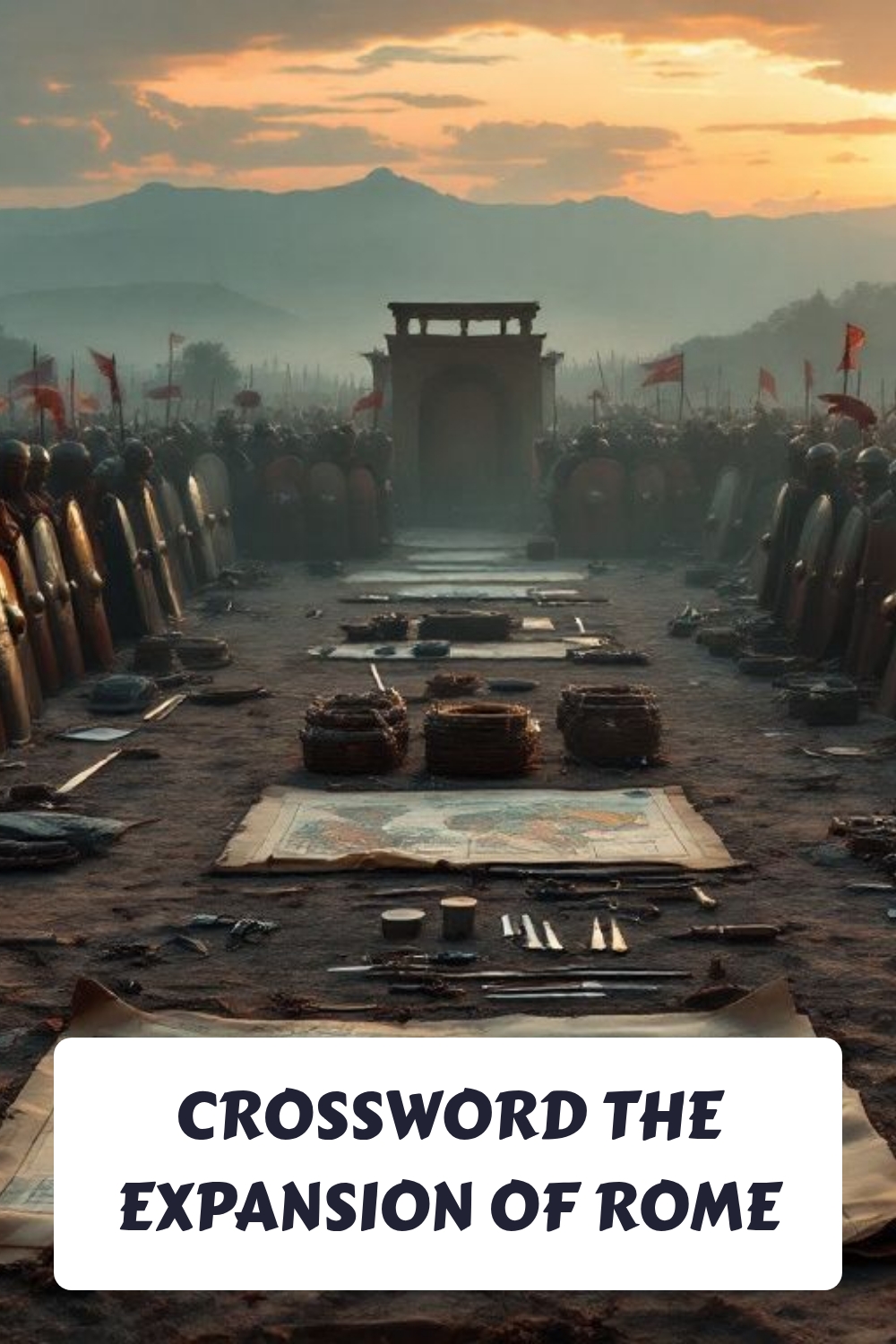What factors contributed most significantly to the Roman Empire’s remarkable expansion and long-term control of vast territories?
The Roman Empire’s unparalleled expansion and enduring control were due to a multifaceted approach. Firstly, its highly adaptable and professional military, perfected through reforms under leaders like Gaius Marius and Emperor Augustus, was crucial. This included standardized equipment, continuous service, and flexible tactical units like the cohort. Secondly, effective governance through an efficient bureaucracy, a standardized taxation system (like the annona for grain), and a unified legal framework helped integrate diverse populations. Rome also excelled at diplomacy, forming alliances and granting varying degrees of citizenship to conquered peoples, fostering loyalty and providing new recruitment pools. Economically, expansion brought wealth through resources, trade, and enslaved labor, funding further campaigns and public works. Strategic infrastructure, particularly an extensive road network and advanced port cities like Portus, facilitated military movement, trade, and communication, physically binding the empire together. Finally, cultural assimilation, through Romanization of language, customs, and even religious syncretism, helped create a shared identity and reduce resistance.
How did the Roman military evolve to support the Empire’s continuous growth and adaptation to new threats?
The Roman military underwent significant transformations to meet the demands of an expanding empire. Initially, it comprised citizen militias, but reforms under King Servius Tullius introduced military service based on social class. The rise of the Republic saw a more professionalized army and the adoption of the flexible manipular system. Faced with formidable enemies like Carthage and Greek kingdoms, Rome learned the importance of improved logistics and adaptable battlefield tactics. By the late Republic, Gaius Marius opened enlistment to the landless poor, creating a professional standing army with long terms of service and standard equipment, organized into the more powerful cohort structure. Emperor Augustus further streamlined the military, establishing permanent legions loyal to the emperor and creating a military treasury (aerarium militare) for consistent pay and pensions. Roman legions were also highly disciplined, self-sufficient units, capable of building fortified camps, bridges, and siege engines, and integrating specialized roles like engineers and artillerymen. This continuous evolution in organization, training, and logistics allowed the Roman military to sustain prolonged campaigns and adapt to diverse environments.
What role did political innovations and governance strategies play in Rome’s ability to unify and manage its diverse conquered populations?
Rome’s political innovations and flexible governance were fundamental to its long-term stability and control. The evolving political system, from monarchy to republic to empire, allowed Rome to adapt to changing circumstances. A key strategy was the gradual integration of conquered peoples, often beginning with partial citizenship and eventually extending full citizenship, which offered legal protections, trade rights, and social prestige. This policy fostered loyalty and assimilated populations into the Roman system, expanding the pool of talent and recruits. Rome also established a unified legal system that applied to all citizens and subjects, providing a common framework. Furthermore, a pragmatic approach to local customs and traditions, allowing varying degrees of autonomy in provinces and utilizing client states, reduced resistance and made governance more manageable. Leaders like Augustus centralized power and established an efficient bureaucracy for tax collection and resource management, which supported the vast administrative and military apparatus.
How did economic factors and infrastructure contribute to the Roman Empire’s success and expansion?
Economic expansion and robust infrastructure were vital to Rome’s success. Conquests brought immense wealth through enslaved people, precious metals (like gold and silver from mines in Spain and Dacia), and agricultural produce. This influx of resources funded the military, public works, and the state. Rome developed extensive trade networks across the Mediterranean and beyond, facilitated by a standardized currency and an efficient taxation system that contributed significantly to state revenue. Crucially, the Romans were master engineers, building an unparalleled network of roads that allowed for rapid troop movement and efficient trade across vast distances. They also constructed impressive ports and harbors, such as Portus and Caesarea Maritima, which served as vital hubs for trade, military logistics, and the critical grain supply to feed the burgeoning population of Rome. Urbanization and the establishment of colonies, often settled by veterans, further integrated conquered territories into the Roman economic and cultural fabric.
What challenges and setbacks did the Roman Empire face during its period of expansion, and how did these foreshadow later decline?
As the Roman Empire expanded, it encountered several significant challenges that foreshadowed its eventual decline. Military overstretch became a major issue, as maintaining a vast military presence across extensive borders put enormous strain on the economy and logistics. Supplying armies fighting far from home across three continents proved increasingly difficult and costly. Political instability, particularly issues with imperial succession, led to frequent power struggles, assassinations, and military coups, weakening central authority and leading to periods of civil war (like the Crisis of the 3rd Century). This lack of continuity in leadership hindered effective governance and the ability to address mounting problems. Economically, Rome became overly dependent on constant conquests for wealth and enslaved labor. As expansion slowed, the influx of these resources diminished, leading to financial strain, heavy taxation, and severe inflation. External threats from barbarian tribes on stretched borders also increased in frequency and intensity, overwhelming the already strained Roman military.
How did the concept of “Romanization” contribute to the Empire’s cohesion and control over its territories?
Romanization was a deliberate and effective strategy for maintaining cohesion and control within the Empire. It involved the gradual assimilation of conquered peoples into Roman culture, law, and language. This was achieved through various means, including the extension of Roman citizenship (partial or full), which conferred legal protections, rights, and a sense of belonging to the Empire. Roman soldiers brought their customs, language, and religion to new lands, embedding them through architecture like amphitheaters and public baths, which became cultural focal points. Religion also played a role, with the Empire often adopting and Romanizing foreign deities and deifying emperors, fostering religious syncretism that integrated diverse populations. The establishment of colonies, often populated by Roman veterans, served as garrisons, centers of Roman culture, and hubs of economic activity, facilitating the spread of Roman customs and law. This cultural integration fostered loyalty and made governance more manageable across the vast and diverse empire.
What was the significance of naval power and maritime control in the Roman Empire’s growth and ability to sustain its large population?
Naval power and control of the sea were absolutely essential to the Roman Empire’s growth and its ability to sustain its massive population, particularly that of Rome itself. The Mediterranean Sea acted as a “superhighway” for trade and military logistics. Without control of the sea, Rome struggled to feed its capital, which swelled to a million people by the 1st century AD. The ability to transport massive quantities of grain (150-300 million tons annually) from fertile regions like Egypt to Rome was critical for preventing riots and maintaining imperial power. This necessitated the development of sophisticated port facilities, such as Portus near Rome and Caesarea Maritima, which were marvels of Roman engineering. These ports, connected by intricate canal systems to rivers like the Tiber, allowed for the efficient movement of goods from large sea-going vessels to smaller barges that could navigate inland. Control of trade routes also brought immense wealth to Rome, funding its military and administrative functions, while simultaneously spreading its power and influence across the Mediterranean world.
How did the various Roman emperors contribute to or hinder the Empire’s expansion and stability?
Various Roman emperors significantly shaped the Empire’s expansion and stability. Augustus, the first emperor, consolidated vast territories inherited from the Republic, reformed the military, established the Pax Romana (a period of peace and prosperity), and laid the foundations for a stable imperial administration. Emperors like Claudius continued expansion, notably with the conquest of Britain, often to build their reputation and stabilize the empire. Trajan’s reign marked the territorial zenith of the Empire, with conquests in Dacia, Arabia, Armenia, Mesopotamia, and Babylon, demonstrating aggressive and effective military leadership.
However, not all emperors contributed positively. Caligula and Nero, for instance, are remembered for their erratic behavior, cruelty, and ineffective rule, which led to internal unrest and rebellions in newly conquered lands. The lack of clear succession plans often plunged the empire into chaos, as seen in the “Year of the Four Emperors” after Nero’s suicide and the prolonged “Crisis of the 3rd Century,” where numerous “Barracks Emperors” rapidly rose and fell through military backing. Emperors like Hadrian, recognizing the empire’s overextension, focused on consolidation and defense, building walls (like Hadrian’s Wall) and returning difficult-to-manage lands, marking a shift from aggressive expansion to maintaining existing borders. The “Five Good Emperors” era (Nerva to Marcus Aurelius) brought stability, prosperity, and careful management, demonstrating the importance of effective leadership for imperial well-being.


 Cart is empty
Cart is empty 

